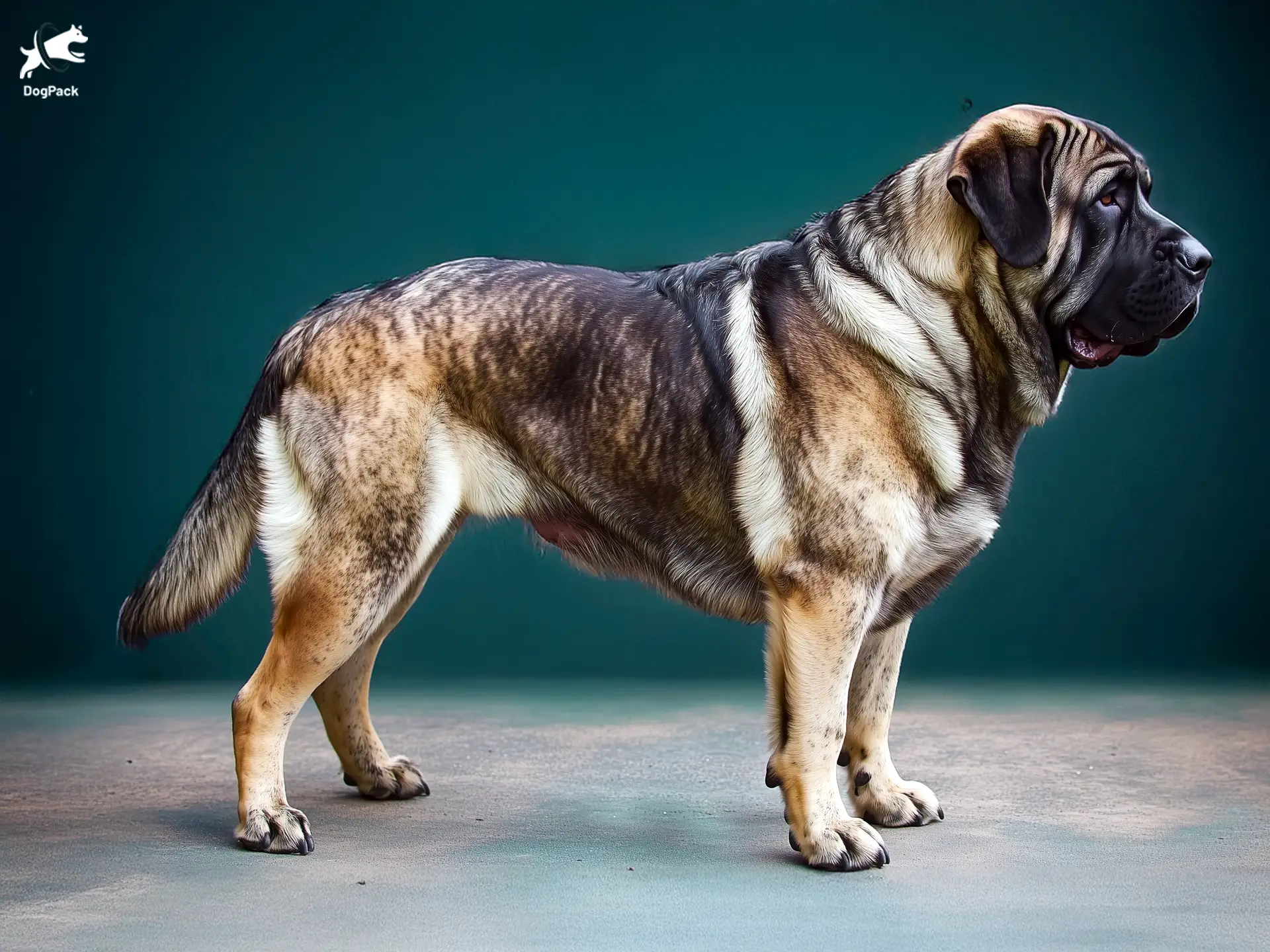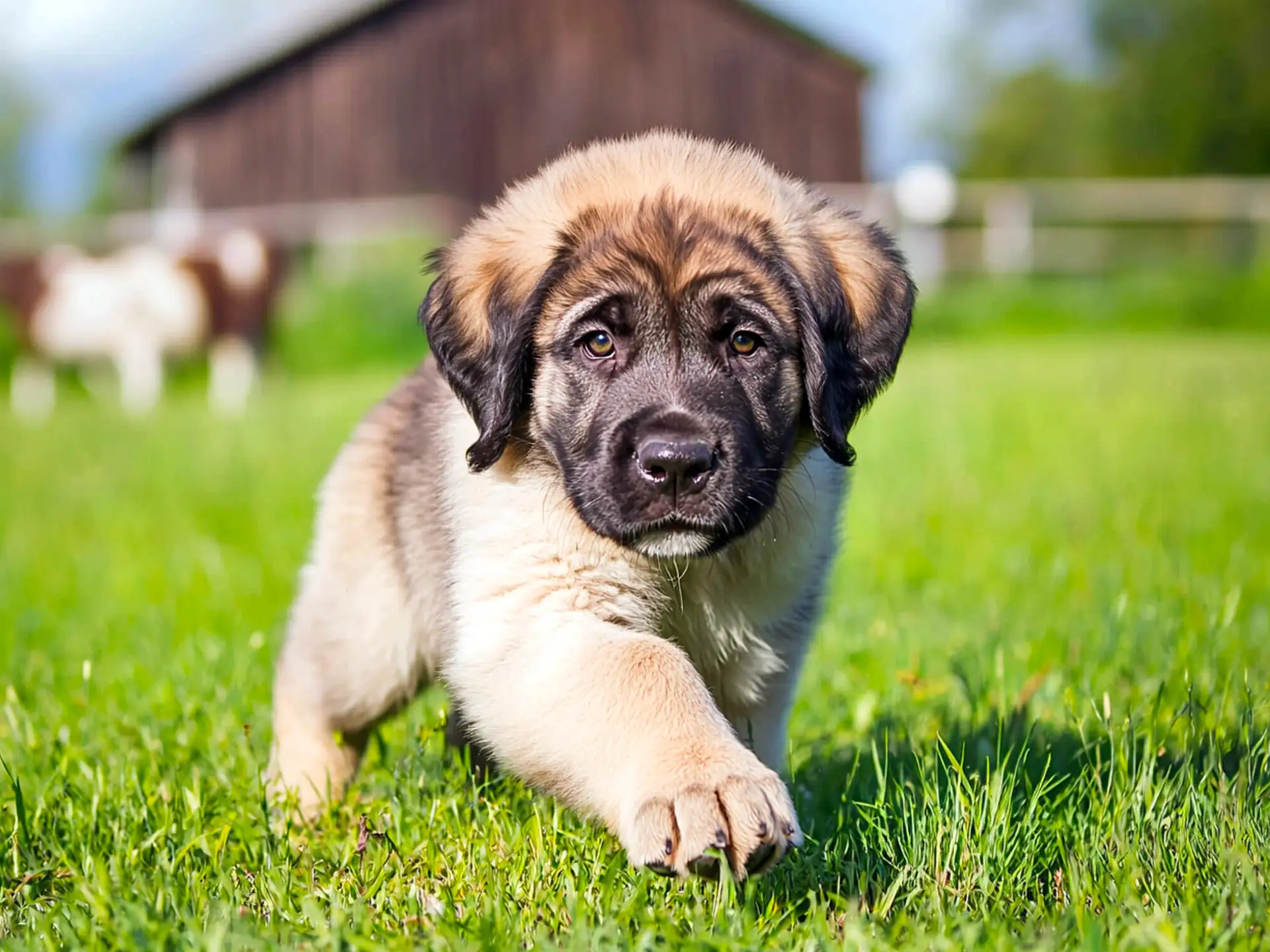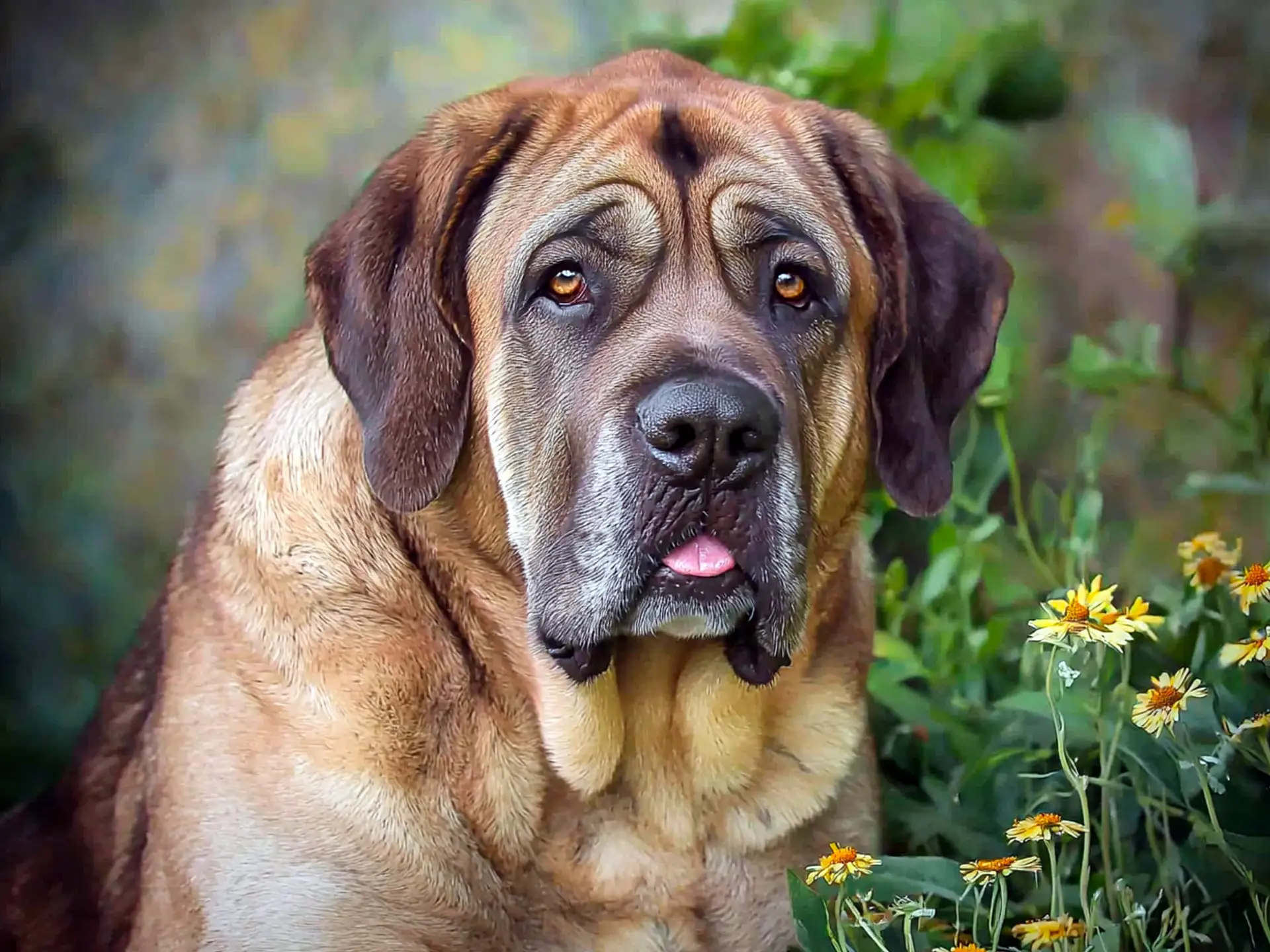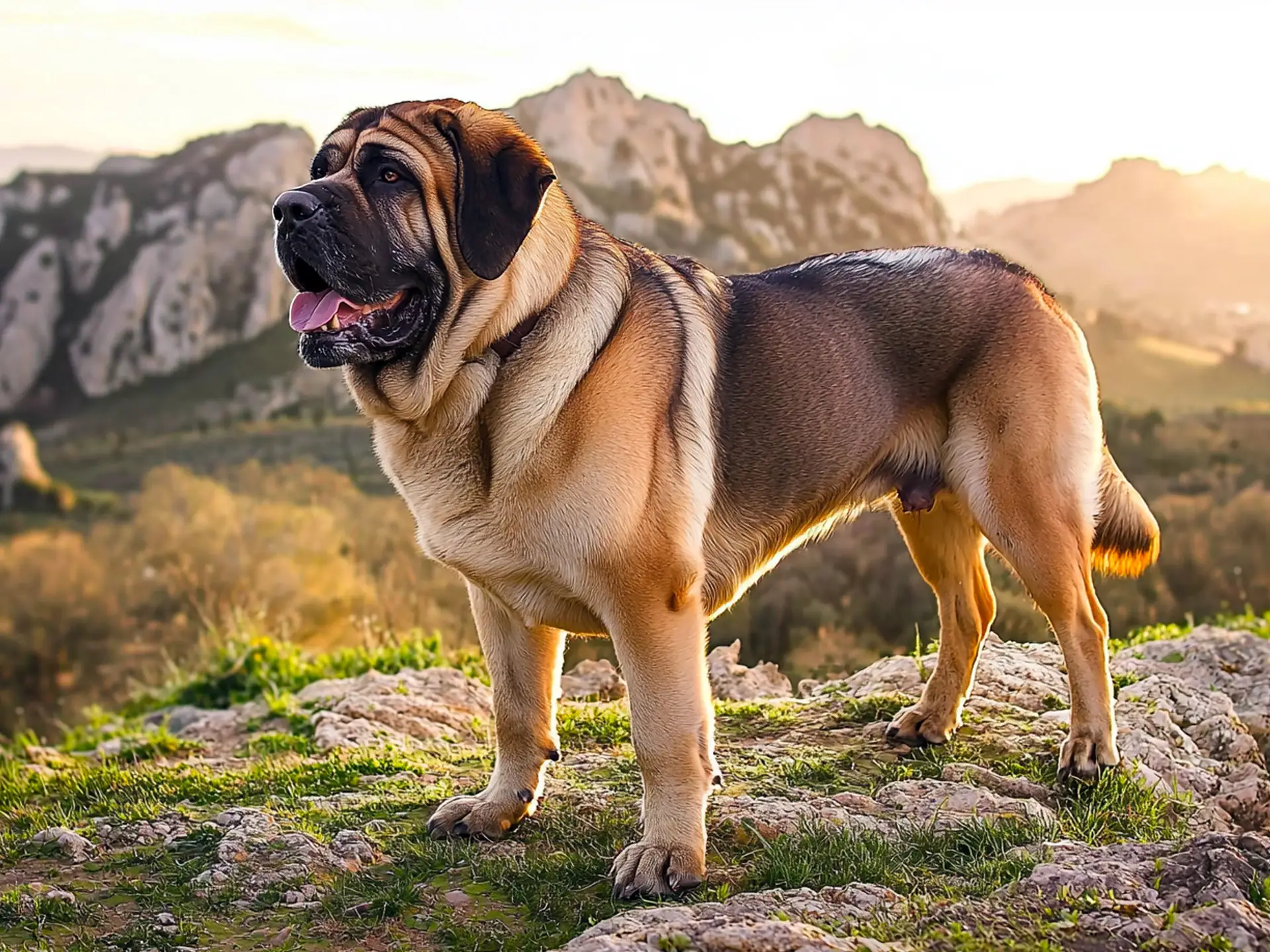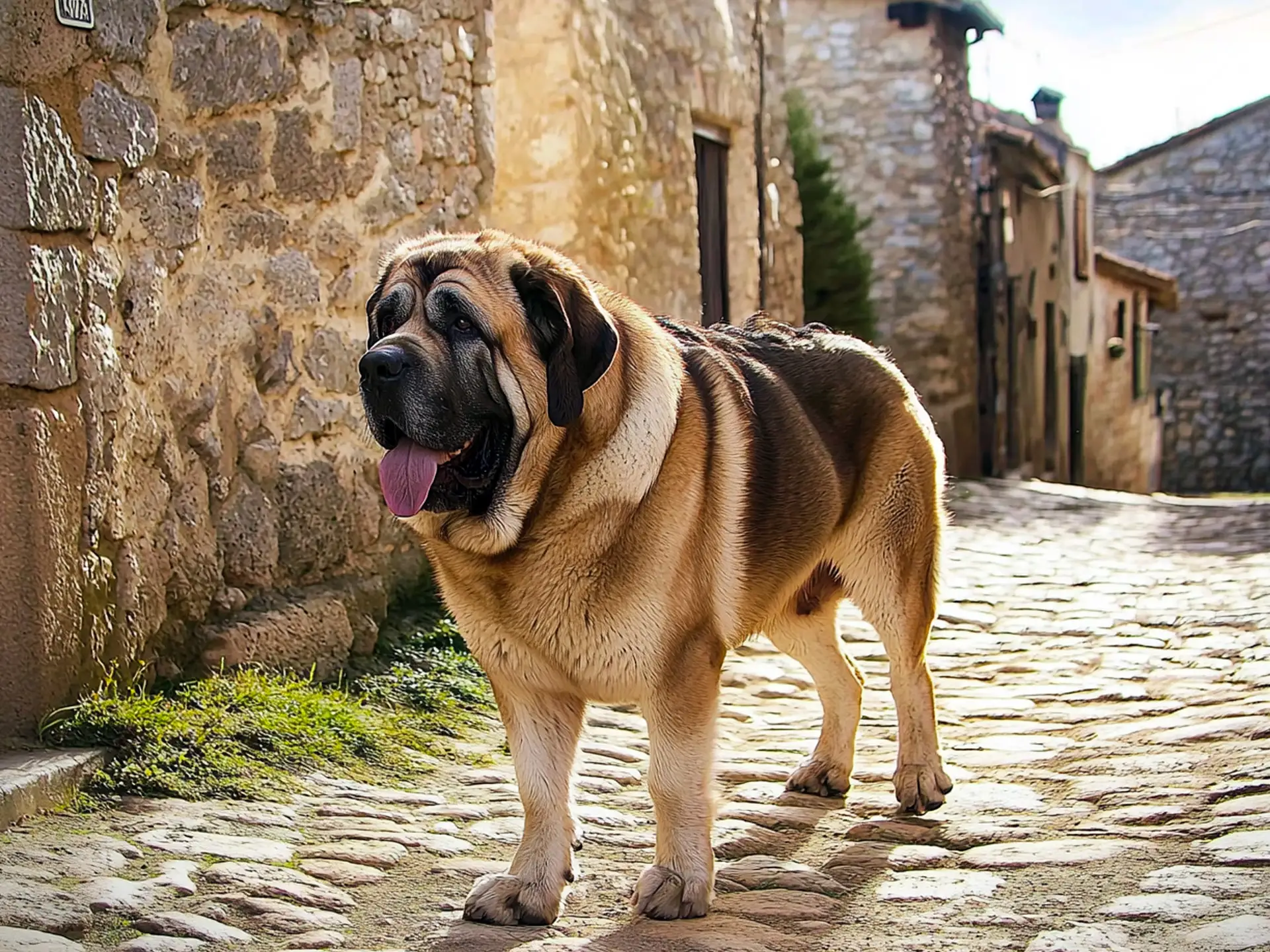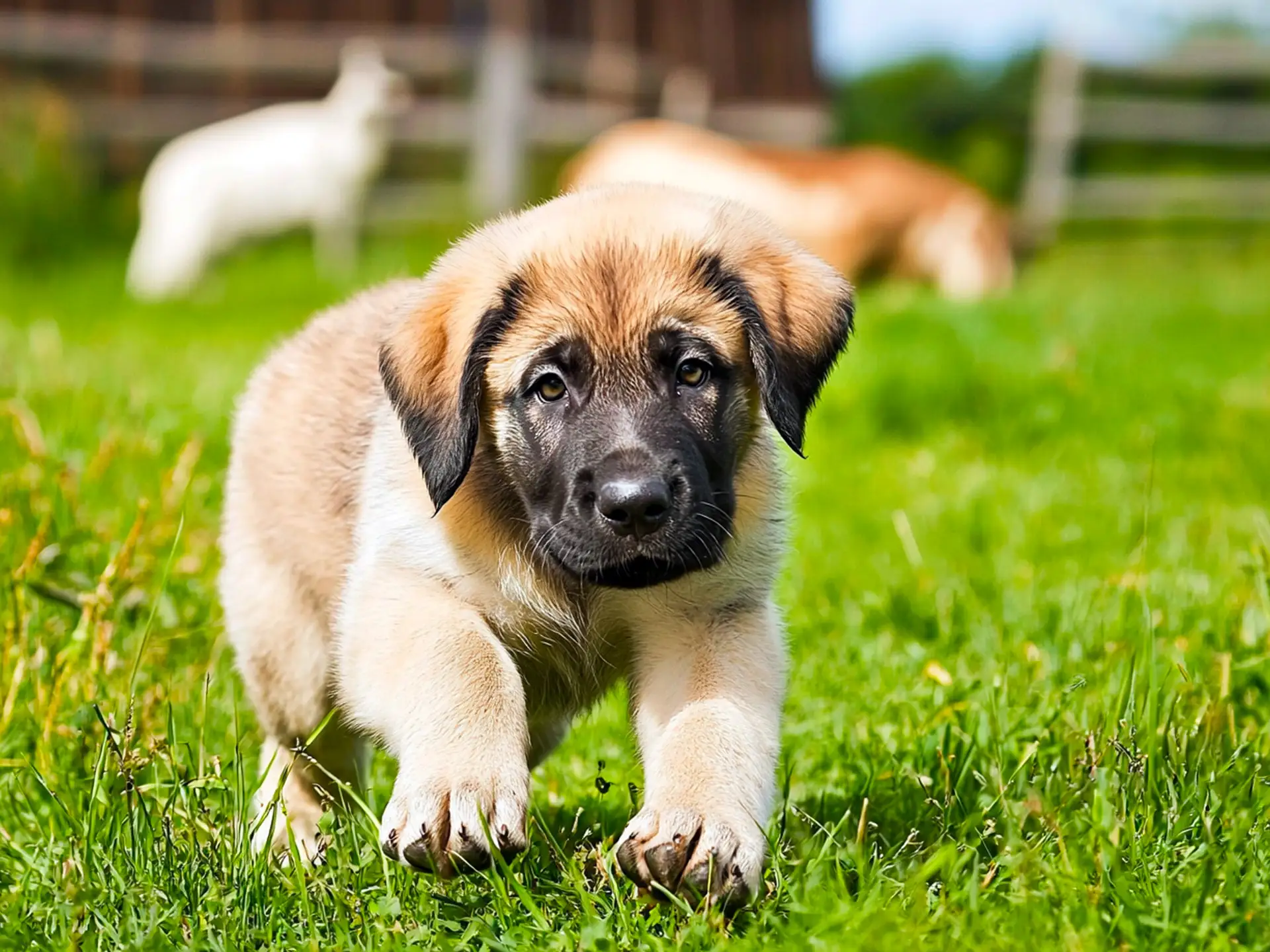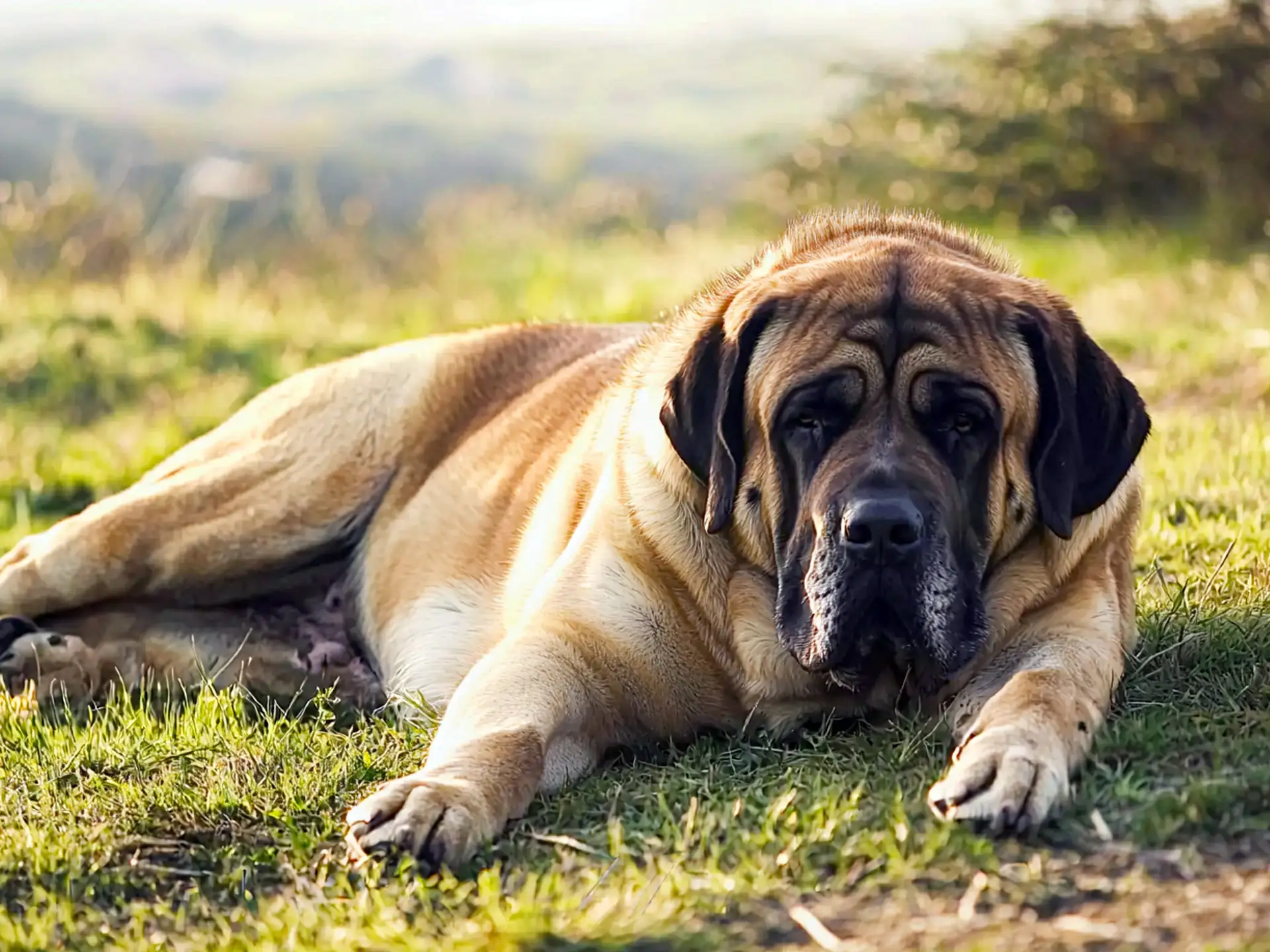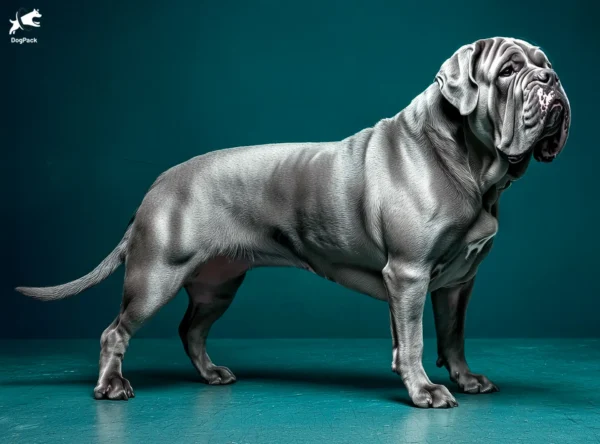Spanish Mastiff Dog Breed Info & Overview
Big-boned and impressively stout, the Spanish Mastiff boasts a history of steadfast livestock guarding and devoted companionship. Renowned for their calm demeanor and protective instincts, these dogs thrive with patient, experienced owners. Whether patrolling farmland or snoozing at home, they remain a formidable yet affectionate guardian you won’t soon forget.
Characteristics
Pictures
Breed History
As legend has it, these dogs have roamed the Iberian Peninsula for centuries, standing watch over flocks and farmland with unshakeable devotion. Some say they accompanied nomadic shepherds who trekked across rugged terrain in search of greener pastures. Throughout this journey, their imposing size and calm demeanor set the foundation for their enduring reputation.
Over time, royal courts and rural homesteads alike recognized the breed’s value in protecting valuable livestock from wolves and other predators. Historical records suggest they played a vital role in agricultural economies by ensuring herds remained safe. Not surprisingly, these fearless guardians also became symbols of status, prized for their loyalty and imposing presence.
Even in modern Spain, the Spanish Mastiff remains a beloved working dog with a celebrated heritage. Breed enthusiasts appreciate its link to a pastoral legacy, where vigilance and a steady temperament were essential. Though technology and new farming methods have emerged, this dog’s storied history continues to shape its identity as a steadfast protector.
Temperament, Personality
Calm and reflective by nature, this dog typically exudes a laid-back demeanor that belies its massive size. Friends and family often describe them as quietly observant, content to nap until something piques their curiosity. While not a dog that bounces off the walls, they do have a strong protective drive, especially when guarding those they cherish.
When it comes to children, they can be patient playmates, but adult supervision is essential given their sheer heft. Thanks to early socialization, they may adapt well to living alongside other pets, provided each animal’s space and boundaries are respected. Strangers, however, might receive a reserved reception until this big softie decides they’re worthy of trust.
A Spanish Mastiff typically takes its role as household sentinel seriously, often positioning itself where it can keep an eye on everything. Once it warms up to new people or situations, the breed’s affectionate side shines through. Beneath that rugged exterior, you’ll find a gentle soul eager to forge deep bonds with its human companions.
Physical Characteristics
From the thick, loose skin around the neck to the massive bone structure, this dog is immediately recognizable. A broad head, sturdy limbs, and a deep chest contribute to its monumental appearance. Don’t be surprised if your arm gets a workout from petting such a large surface area—there’s just more dog to love.
Many individuals sport a dense double coat that comes in a variety of colors, including fawn, brindle, and black. The outer coat tends to be coarse, while the undercoat offers insulation against chilly nights outdoors. This thick covering was historically crucial, enabling them to endure harsh conditions in mountainous regions.
Standing well above many other large dog breeds, the Spanish Mastiff exudes both power and poise. Despite their impressive bulk, these dogs move with a measured gait, hinting at their capacity for sudden bursts of energy when necessary. Add in their characteristic droopy jowls, and you have a canine that leaves an unforgettable impression.
Health Issues
As with many giant breeds, joint concerns like hip and elbow dysplasia can plague these dogs, making regular veterinary checkups crucial. Some individuals may also experience bloat, a life-threatening condition that affects the stomach if not addressed promptly. Maintaining a healthy weight through balanced nutrition and appropriate exercise can significantly reduce these risks.
Heart issues, particularly dilated cardiomyopathy, sometimes crop up, so it’s wise to monitor your dog’s cardiovascular health with routine screenings. Eye problems like entropion or ectropion may also appear due to the loose facial skin that characterizes the breed. Catching such conditions early and following proper treatment can help prolong your companion’s active years.
The Spanish Mastiff generally benefits from a proactive approach, including regular vaccinations and parasite prevention. By working closely with a knowledgeable veterinarian, owners can craft a healthcare plan that addresses breed-specific vulnerabilities. Paying attention to small changes in behavior, appetite, or mobility is a vital part of ensuring your guardian remains fit and content.
Grooming Needs
Given their thick coat, a weekly brushing session can help remove loose hair and prevent matting. During seasonal shedding—especially in spring—a more frequent brush-out might be necessary to keep fur tumbleweeds at bay. A firm bristle brush or a grooming rake works well to reach the undercoat and maintain that plush, protective layer.
Ear care is crucial because their large, droopy ears can harbor moisture and debris, leading to infections. Regular checks and gentle cleaning with a veterinarian-approved solution will mitigate these risks. Meanwhile, keeping the nails trimmed prevents painful cracking or splitting, especially since these giants carry a lot of weight on their paws.
Although the Spanish Mastiff isn’t a high-maintenance diva, occasional baths ensure their coat remains clean and their skin stays healthy. Focus on mild shampoos to avoid stripping essential oils that protect both skin and fur. Finally, don’t forget about dental hygiene—a weekly brushing helps stave off plaque buildup for a winning, drool-worthy smile.
Exercise Requirements
Despite their calm disposition, these dogs still need daily walks or moderate play sessions to keep joints limber and muscles strong. A leisurely stroll can be enough for some, but be prepared for short bursts of energy if they spot something interesting. Keep in mind, they’re not built for marathon runs, so pacing is essential.
Allowing them to roam in a securely fenced yard can help satisfy their exploratory instincts. Because they are historically a working dog, mental stimulation also plays a big role in their wellbeing. Activities such as puzzle toys or light agility courses can keep their brains engaged, though they’ll likely approach any athletic endeavor at a measured pace.
For the Spanish Mastiff, overexertion can lead to joint strain or even injury, especially in puppies whose bones are still developing. Gradually build up exercise routines and consider low-impact options like swimming if available. By balancing movement and rest, you’ll help your gentle giant maintain a healthy physique and a contented state of mind.
Training Tips
Patience and consistency go a long way with these intelligent, if somewhat independent, dogs. Rather than relying on harsh corrections, focus on positive reinforcement methods like treats and praise. Their protective instincts can be channeled into good manners by starting socialization early, introducing them to different people, places, and experiences before they become set in their ways.
Confidence is key when training such a large guardian. They’re more likely to respect and respond to someone who exudes calm authority without resorting to shouting. Short, focused sessions can prevent boredom while also reinforcing commands. Make use of their natural watchful nature by teaching them to signal threats appropriately rather than reacting out of fear or uncertainty.
A Spanish Mastiff appreciates a leadership style that balances firmness with warmth. This breed thrives under an owner who sets clear rules and boundaries, yet remains empathetic to its sensitive side. If you’re unsure how to proceed, enlist a professional dog trainer experienced with giant breeds—an investment that pays off in a well-adjusted companion.
Nutrition, Diet
These imposing canines typically consume around 5 to 7 cups of high-quality kibble daily, split into two meals to prevent bloat. Some owners opt for a specialized giant-breed formula that includes joint-supporting nutrients like glucosamine and chondroitin. It’s wise to monitor their weight closely, as extra pounds can exacerbate hip and elbow issues.
Because they have relatively slow metabolisms, offering calorie-dense diets might lead to unintended weight gain. Balancing proteins, healthy fats, and moderate carbs is key, whether you choose kibble or a carefully curated raw regimen. Aim for formulas with at least 22% protein, ensuring your dog gets the muscle-building amino acids it requires.
For a Spanish Mastiff that spends much of the day in a pasture or guarding a property, slightly higher caloric intake may be necessary. Always adjust portion sizes based on activity level and age, consulting with your veterinarian for personalized recommendations. Hydration is also essential, so ensure fresh water is readily available throughout the day.
Adoption, Breeders
Locating a reputable source for this breed can be challenging, as they’re more prevalent in rural parts of Spain. However, connecting with specialized clubs, such as the Spanish Mastiff Club of America, can help you find trustworthy breeders. This organization often maintains a network of enthusiasts who prioritize health testing and responsible breeding practices.
Ask potential breeders about hip and elbow clearances, as well as any documented heart screenings. Visiting the breeding facility can offer insight into how puppies are socialized and cared for from birth. If a breeder is reluctant to share medical records or raise their litters in a clean, nurturing environment, consider it a red flag.
For those leaning toward adoption, a Spanish Mastiff might be found through rescue organizations dedicated to giant dogs, or by searching larger shelters that occasionally house these majestic protectors. Petfinder is another valuable resource. Whether you choose a puppy or an older dog, ensure that your home and lifestyle can accommodate this breed’s size and temperament.
Family Pet?
Though their colossal stature can be intimidating, these dogs often form deep attachments with family members. They’re not typically high-energy bundles bouncing off the walls, so families who prefer a calmer household may appreciate their mellow side. Of course, they still enjoy a good romp in the yard, especially with older children who can handle a big playmate.
Younger kids should be supervised—mainly because the dog’s sheer size could accidentally topple a small child. However, with patient training and consistent boundaries, they can coexist quite happily. As natural protectors, they tend to step in if they sense a threat, which can bring peace of mind but also requires proper socialization to prevent misunderstandings.
When integrated into a loving family, the Spanish Mastiff thrives on gentle affection and a sense of belonging. They may look serious on the outside, but they relish time spent near their favorite people. With the right guidance, this breed can adapt well to a variety of households, as long as everyone respects its protective instincts.
Right For You?
Space is a major consideration, given their impressive size and tendency to sprawl. If you’re living in a studio apartment, you might want to think twice before inviting one of these gentle giants home. A house with a securely fenced yard is ideal, offering enough room for them to stretch their legs and keep an eye on passing squirrels.
Experience with large or working breeds can be a big plus, as you’ll already have a handle on training and socialization challenges. First-time dog owners aren’t entirely ruled out, but they must be ready to learn quickly. A confident and patient approach is essential, balancing positive reinforcement with clear boundaries that help foster mutual respect.
Ultimately, the Spanish Mastiff suits those who appreciate a devoted guardian capable of both watchful protection and calm companionship. If you have the space, time, and dedication to meet its needs, you’ll gain a loyal friend that takes your family’s well-being to heart. If not, a smaller or more active breed might be a better fit.
Conclusion
Bringing a towering protector into your life is no small commitment, but the rewards can be incredible. With a confident approach to training and an environment suited to a giant breed, you’ll find a steadfast companion who blends calm devotion with a fierce protective instinct. Whether you’re drawn to the pastoral romance of a working guardian or simply love the idea of a massive cuddle-buddy, the Spanish Mastiff delivers a unique, deeply loyal bond. By ensuring proper socialization, healthcare, and daily engagement, you can cultivate a relationship rooted in trust and respect. If you’re prepared for the size and the drool, this gentle giant may just be the perfect partner for your home.
FAQs
-
What makes the Spanish Mastiff different from other mastiffs?
The Spanish Mastiff is larger and more rugged than many other mastiffs, bred for livestock guarding rather than guarding estates. Unlike the English Mastiff, which is more companion-oriented, the Mastín Español is independent and thrives in rural environments.
-
Can a Spanish Mastiff live in an apartment?
Due to their sheer size and working instincts, Spanish Mastiffs are not suited for apartment living. They require large outdoor spaces and do best in rural or farm settings where they can roam and guard livestock.
-
How well does the Spanish Mastiff tolerate heat and cold?
Spanish Mastiffs have a thick double coat that protects them in cold weather but also allows them to tolerate heat better than some other mastiff breeds. However, in extreme heat, they require shade, water, and limited activity during peak sun hours.
-
Are Spanish Mastiffs aggressive toward strangers?
The Mastín Español is not inherently aggressive but is extremely territorial and wary of strangers. As a guardian breed, they will defend their home or livestock but are generally calm and observant rather than overly reactive.
-
Why do Spanish Mastiffs drool so much?
Like many mastiff breeds, the Spanish Mastiff has loose jowls, which cause significant drooling, especially after eating, drinking, or in hot weather. Keeping a towel nearby and cleaning their mouth regularly can help manage the drool.
Breed Ratings
The Spanish Mastiff can be quite perceptive but may appear stubborn. With consistent training, they show respectable problem-solving skills.
These giants can be playful in short spurts, but the Spanish Mastiff usually prefers a calm environment to rowdy, nonstop games.
A Spanish Mastiff enjoys moderate exercise and leisurely walks. They’re not marathon runners but can handle short bursts of activity.
Spanish Mastiffs have a dense double coat that sheds seasonally. Regular brushing helps manage fur, but expect some hair around.
While traditionally livestock guardians, the Spanish Mastiff isn’t especially prey-focused. They’re more interested in deterring threats.
With routine brushing and occasional baths, the Spanish Mastiff remains fairly low-fuss. Ear care is crucial to avoid infections.
Spanish Mastiffs respond best to patient, positive methods. They can be independent, so consistency and early socialization are key.
The Spanish Mastiff can handle solitude, especially with a secure space. They’re relatively calm but still benefit from interaction.
Spanish Mastiffs generally bark when necessary. They can be vocal if they sense a threat, but excessive barking is uncommon.
Big jowls mean big drool! The Spanish Mastiff often leaves a trail, so keep a towel handy if you’re not fond of slobbery kisses.
Early socialization helps the Spanish Mastiff coexist with other dogs, but their size and protectiveness may require mindful introductions.
While fairly robust, the Spanish Mastiff can face joint issues and bloat. Routine vet visits and preventive care are essential.

